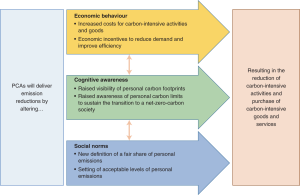Are Carbon Credits Ethical?
Carbon Credits Ethical
Purchasing carbon credits is an alternative to the traditional methods of reducing emissions. Companies that are unable to reduce their emissions can purchase the credits, which will then be used to offset their emissions. This is one way to achieve the 1.5C global warming goal by 2040. However, it also raises ethical questions.
There are two types of carbon.credit. One is the VER, or verifiable emission reduction, which is a project that is designed to measure and record the amount of carbon dioxide saved. These projects must also ensure that their results are permanent. This is a key factor to the effectiveness of offsets.

Another type of carbon credit is the REC, or renewable energy certificate. These projects can be a direct way of reducing emissions or they can be a way of using renewable energy to offset carbon. These projects can be developed by nonprofit landowners who provide proof that their project would not be possible without the carbon finance. The project must also demonstrate that the carbon savings are not going to be lost in other areas of the planet.
Are Carbon Credits Ethical?
There are many other ways of achieving the same goal. One of the easiest ways is to donate to an organization that supports the green movement. This can include charities such as the Red Cross, which works to prevent climate change. Others can help support organizations that encourage sustainable actions, such as Friends of the Earth, which promotes a clean energy future.
There are also organizations that sell the credits. These include the Nature Conservancy, which owns 20 projects in the United States. These projects do not actually threaten trees, but rather, they generate carbon credits for big corporations. Those companies then pay the Conservancy for the credits.
There are many questions around the use of carbon credits. These include whether or not they are effective in reducing CO2 emissions, and if they should be considered ethical. Other concerns are how much they cost, how to choose the right projects, and whether or not they are sustainable. These questions are all addressed in a post on curbing greenhouse gas emissions.
There are many other ways to mitigate the impacts of greenhouse gases. Individuals can make a difference by changing their daily habits. Companies can do their part by encouraging their employees to implement environmentally friendly practices. They can create green spaces and encourage their customers to do the same. These changes can lead to big environmental improvements. But they won’t stop the problem altogether. They will only delay real action.
The other important aspect to consider when choosing an offset is additionality. In the case of a tree plantation, the project must show that the trees won’t be cut down before the project is implemented. This can be accomplished through a comparison of the project to a scenario in which the project does not receive the offset.
Carbon offsets do not reduce CO2 emissions, but they do mitigate the problem. But they are often criticized as being unethical. For instance, an academic study found that only a quarter of the claimed carbon savings were actually achieved.